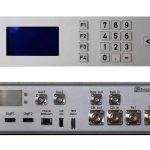
Deep in the 1,600+ pages of the omnibus spending bill is a boost for those integrating unmanned aircraft into the nation’s airspace and a pilot project aimed at helping commercialize defense-developed intellectual property, including unmanned innovations.
Deep in the 1,600+ pages of the omnibus spending bill is a boost for those integrating unmanned aircraft into the nation’s airspace and a pilot project aimed at helping commercialize defense-developed intellectual property, including unmanned innovations.
Under the provisions lawmakers agreed to give the Federal Aviation Administration (FAA) $15 million to support integration-related research, adding $6 million to the $9 million requested by the White House. The budget for fiscal year 2015 (FY2015) is a substantial increase over FY14 year when Congress allocated $8.64 million for the effort.
Of the FY15 increase, $4 million is earmarked for a new Center of Excellence (COE) on unmanned aircraft systems (UAS), giving the FAA a total of $5 million for the program. Coalitions of universities and research centers submitted their proposals for the COE in September and the agency is expected to announce its choice early next year. The center is to be operational no later than September 15, 2015.
Perhaps more important is the $2 million plus-up intended to support FAA’s research into “UAS research goals of system safety and data gathering, aircraft certification, command and control link challenges, control station layouts and certification, sense and avoid, and environmental impacts.” The agency has been fiscally hamstrung and largely unable to contract with its six new test ranges for essential research or fully take advantage of results from privately funded studies as initially planned.
“We applaud Congress for recognizing the importance of UAS technology and providing additional funding to the FAA to expedite the integration process,” said Michael Toscano, president and CEO of the Association for Unmanned Vehicle Systems International. “Industries across the U.S. have begun to realize the potential of this technology, and are eager to use it for everything from agriculture to filmmaking. These additional funds will help to expedite the UAS integration process and help to ensure the safety of our airspace.”
The increase may reflect the particular efforts of Rep. Frank LoBiondo, R – New Jersey, the chairman of the House Aviation Subcommittee and a strong supporter of efforts to use UAS, commonly called drones or unmanned aerial vehicles (UAVs), for commercial applications. He held an informal roundtable with FAA officials in March that delved into the need for greater research support.
DoD Tech Transfer
In a separate move that could benefit unmanned marine and land projects as well as UAS development programs lawmakers added $10 million for a pilot program to help transfer defense technology, including unmanned technology, to the private sector for commercialization.
The money would be used to set up a pilot program to test “public-private technology transfer ventures” between Department of Defense (DoD) research and development centers and laboratories and “regionally-focused technology commercialization organizations.” The primary goal, lawmakers said in the bill, should be to “increase the commercialization of intellectual property developed in the Department’s research and development enterprise in support of critical cross-service technological needs.”
Lawmakers said the pilot should focus on, though not be limited to, unmanned technology as well as energetics, aviation, rapid prototyping, corrosion control, and water quality improvement.
The bill directs the Pentagon to select technology commercialization partners and set up its initial technology incubator partnerships through a “full and open competition.” The emphasis, Congress said, should be on strong business plans, demonstrated expertise in mentorship and commercialization as well as strong regional partnerships.
The new pilot program, which was inserted with the support of Sen. Tom Udall, D-New Mexico, will be conducted by DoD’s assistant secretary of defense for research and engineering. The legislation calls for the secretary of defense to report to the committee on the implementation of the pilot program by April 1, 2015.
The money for the pilot program is a plus-up to funding already in place for other technology transfer efforts. Though the Senate had directed DoD to launch the pilot program in report language published in Senate Report 113-211 on defense appropriations, money was actually added in the omnibus budget bill approved last week.
In other language in the report, which accompanied the 2015 Department of Defense Appropriations Act, lawmakers recommended that an additional $2.5 million be devoted to “complement and leverage current program efforts largely focused on licensing Department of Defense patents.”
Senators want the DoD to apply the additional funds to universities with “robust programs in aviation and aerospace research.” The money will allow these institutions, they said, “to lead the transfer of defense technology to address specific technology shortfalls within the United States aviation and aerospace industry.”






